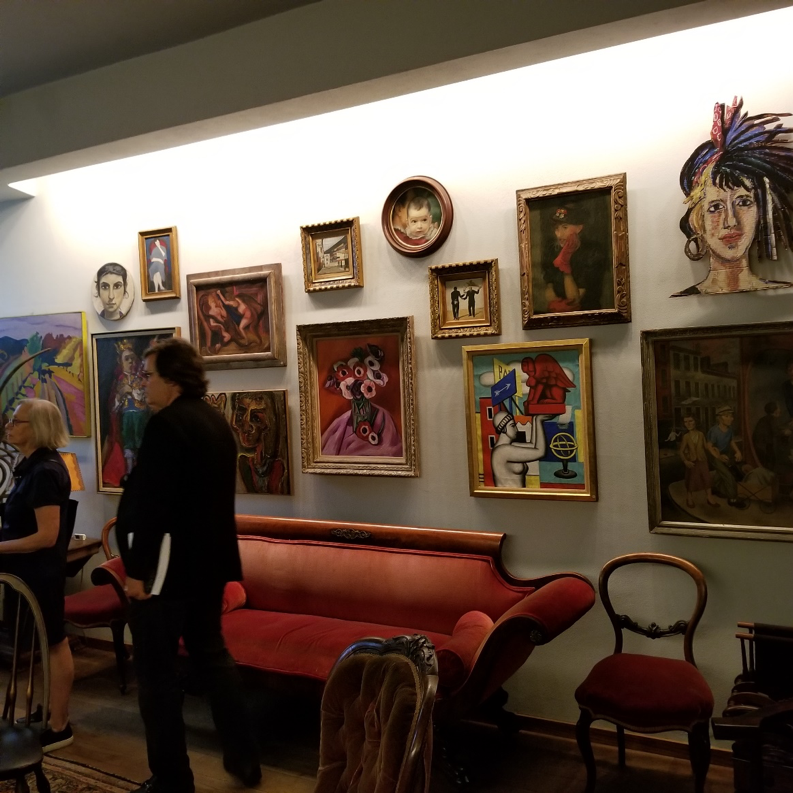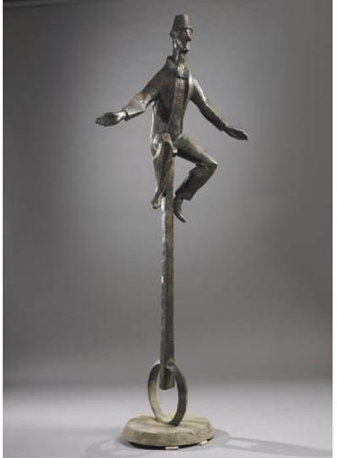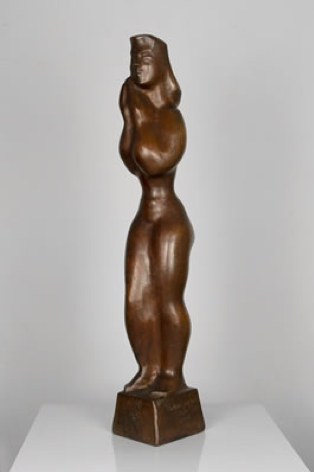As part of a group from the Appraisers Association of America, I visited the studio last week of sculptor Chaim Gross (1902-1991). The building in Greenwich Village now houses the Renee and Chaim Gross Foundation. It’s definitely worth a visit – the ground floor houses the sculptor’s studio, with his and his wife’s living space on the floors above.
The studio, with many examples of his sculpture, also contains his tools and unfinished works which give real insight into Gross’s working method. The walls of his home are filled, salon style, with dozens of paintings by important American artists, many of them friends of the sculptor – Marsden Hartley, Milton Avery, Arshile Gorky, Stuart Davis, Raphael Soyer, Jacob Lawrence, and many more.

Along with the famous names, there are many works by artists who were fairly well-known 50-75 years ago but today are known only to specialists – Byron Browne, Paul Burlin, Nikolai Cikovsky, Lawrence Lebduska, and Sol Wilson, to name but a few. My question here is, into which group does Chaim Gross fit today?
Gross, the son of a timber appraiser, was born in 1902 in the village of Wolowa in the Carpathian Mountains, then part of the Austro-Hungarian Empire. World War I brought attacks and counterattacks by Russian and Austrian forces. At one point, the young Gross was dragooned by the Austrian forces into collecting the dead after a battle. Following the war, Gross studied art in Budapest. Deported by a new Hungarian regime determined to rid the country of Jews and other groups deemed foreigners, Gross studied briefly in Vienna and then emigrated to the United States in 1921.
In New York, Gross studied at a variety of schools, including the Art Students League, and was exhibiting in group shows within five years of his arrival in this country. He had his first solo gallery show in 1932 and later worked under the auspices of the Public Works of Art Project (a forerunner of the W.P.A.), creating sculptures for schools and Federal buildings. He became especially known as a practitioner of direct carving, sculpting from stone or wood as opposed to working in clay or plaster.
The first major book on Gross was published in 1949. Ten years later, he was one of the artists included in Four American Expressionists, an exhibition curated by Lloyd Goodrich at the Whitney Museum of American Art. In the remaining years before his death in 1991, there would be more books written about him, a retrospective at the Smithsonian American Art Museum, and induction into the American Academy of Arts and Letters.
Yet his lifetime success has not translated into high prices today. The record price for one of his works at auction, $66,000 for The Unicyclist, a bronze almost seven and a half feet high, was set 13 years ago.

Most of his small bronzes sell for a few thousand dollars, and even a two-foot-high wood sculpture, Standing Woman, sold for just $10,310 this past spring.

Why has the top market for Gross’s work, and that of other direct carvers such as Jose de Creeft and Robert Laurent, remained stuck in the mid-five figure range, with most of their works going for a fraction of that? I think that they have been the victims of a major change in aesthetics and philosophy. Gross and his peers were poor kids from Europe who respected the grand tradition of European humanism and “high culture” and eagerly aspired to win a place in that tradition. They could make a reference to the influence of Michelangelo or Bernini with a straight face.
Postmodern critics, however, saw their work as fuddy-duddy and often sentimental, lacking any sense of irony. Gross and sculptors like him seemed hopelessly old-fashioned compared to modern sculptors such as John Chamberlain and Mark di Suvero. On the other hand, Gross had been influenced by Picasso and other modernists, and the figures he sculpted were too distorted for common taste. They were caught in the middle, both too modern and not modern enough.
Well, tastes change, though I don’t see Gross’s prices eclipsing those of, say, Jeff Koons in my lifetime. But they’re works of solid craftsmanship, informed by a love of the tradition that gave them birth. And it’s a buyer’s market now. If it’s one you’d like to explore, I can help. Call me.

